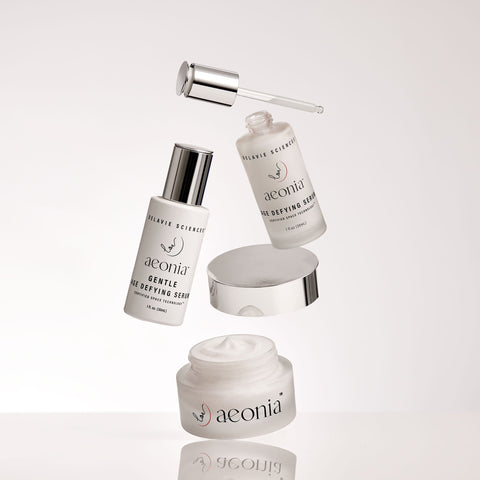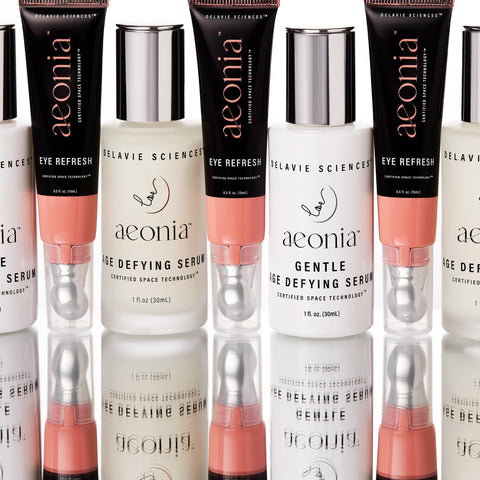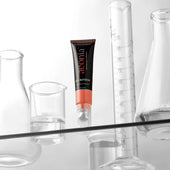HERE’S HOW THEY WORK
Different formulations are for different needs - each has its unique uses and benefits.
With the number of skincare products on the market today, trying to find what works for you can be difficult. Especially with the vast variety in formulations: including serums, creams, lotions, and more.
The biggest difference between serums, cream, and lotions is the ingredients they don’t contain. Serums, for example, typically don’t include airtight (also called “occlusive”) moisturizing ingredients, which can keep water from evaporating and have fewer thickening or lubricating components.
So, is one better than the other? The fact is: each has its own way of delivering benefits to your skin.

Serums
Serums are typically water-based and are intended for use under a moisturizer. They target a variety of different skin issues, such as uneven tones, lines and wrinkles, redness or rash, and other conditions. They generally contain a high concentration of vitamins, acids, antioxidants, minerals, vitamins, antioxidants, and acids. Their main purpose is to penetrate deeply in the skin to repair. The Aeonia Age Defying Serum is a great addition to your skincare regimen to combat these concerns.
Creams
Creams are richer and thicker, with a lower water content than serums and lotions. They create a barrier to lock in moisture and support your skin’s natural defenses. The new Aeonia Sculpting Cream takes creams to the next level by combining Bacillus Lysate with a unique blend of ceramides to deeply hydrate and firm your skin. This luxurious cream strengthens your skin barrier, smooths fine lines, and provides lasting hydration—perfect for those with dry or aging skin.
Lotions
Lotions are higher in water content, lighter weight, non-greasy, and penetrate the skin more easily—when compared to creams. Skincare experts note that every lotion is a moisturizer, but not every moisturizer is a lotion. Since lotions are light and don’t clog pores or leave behind residue, they’re good for oily skin. They can be formulated in several ways. For example, lotions with a high oil and wax content are often used for very dry skin, or as an overnight face treatment. Dissimilarly, lotions can help keep oily skin hydrated, especially in dry climates or during cold winters.
No matter what formulation you choose, the goal is to keep your skin protected and hydrated. Make sure you read labels and research what works best for your skin and needs.
References:
- “Facial Serum vs. Facial Moisturizer: What's the Difference?” Byrdie
- “The Truth About Facial Serums,” WebMD
- “Lotion vs. Cream—Here Are the Main Differences Between These Moisturizers,” WellandGood










